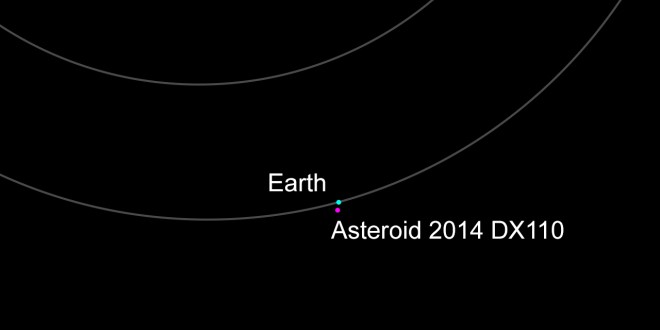An asteroid 100-feet wide will pass between the Earth and moon early Wednesday 2014-DX110-NEO-Close-Flybyevening, only 218,000 miles from our planet.
Asteroid 2014 DX110 will remain a safe distance away from Earth, experts say.
The large asteroid will zip past Earth at 33,000 miles per hour, presenting quite a spectacle.
NASA detects, tracks and characterizes asteroids and comets using both ground- and space-based telescopes. The Near-Earth Object Observations Program, commonly called “Spaceguard,” discovers these objects, characterizes a subset of them and identifies their close approaches to determine if any could be potentially hazardous to our planet.
NASA’s Jet Propulsion Laboratory, Pasadena, Calif., manages the Near-Earth Object Program Office for NASA’s Science Mission Directorate in Washington. JPL is a division of the California Institute of Technology in Pasadena.
More information about asteroids and near-Earth objects is at: http://www.nasa.gov/asteroid.
Agencies/Canadajournal
Related Video
 Canada Journal – News of the World Articles and videos to bring you the biggest Canadian news stories from across the country every day
Canada Journal – News of the World Articles and videos to bring you the biggest Canadian news stories from across the country every day



